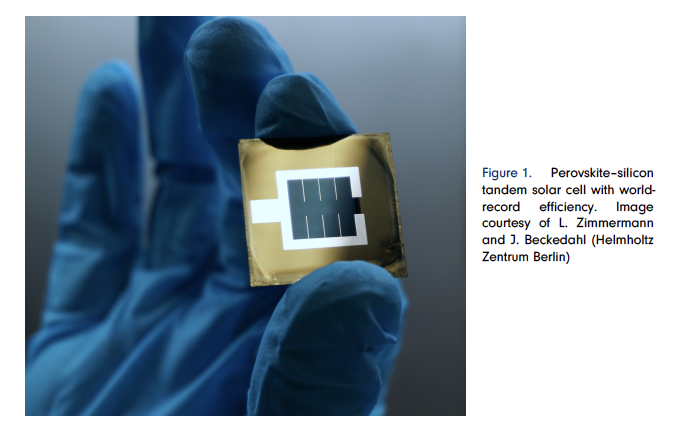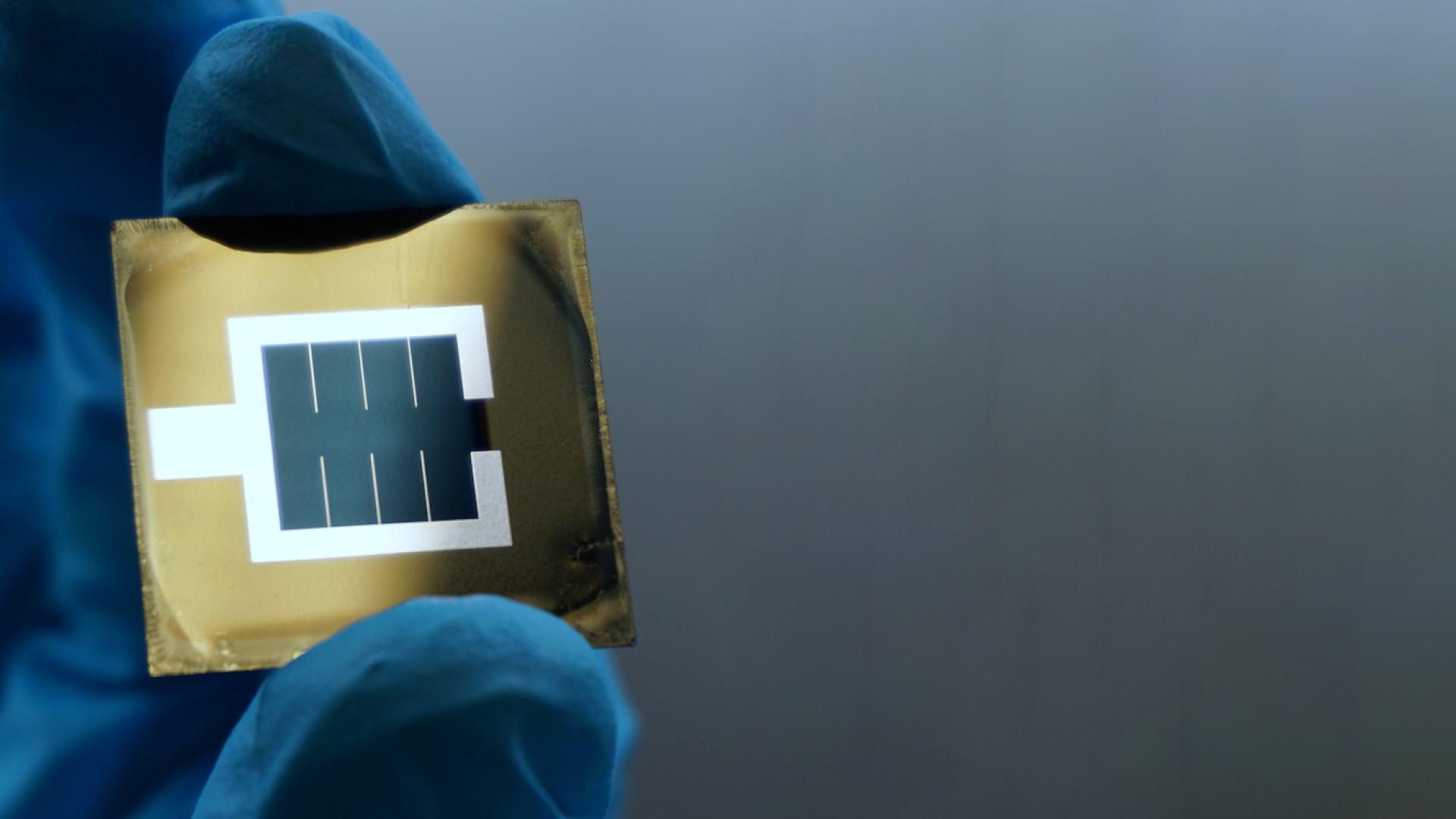Our society is facing tremendous changes related to climate change. In order to reduce CO2 emissions from energy production, we need to exploit sustainable sources of energy. Moreover, an independent energy supply has become a geopolitical topic of highest importance. A cornerstone of any sustainable energy network is solar energy accessed through photovoltaic devices. Consequently, any improvement in photovoltaic cell efficiency can save enormous amounts of emitted CO2. Further, solar fuel devices allow solar energy to be converted into usable fuels. These can be stored and then distributed through existing networks. The research and development of such renewable-energy processes therefore has a major impact on our future society.
In our collaboration with the Helmholtz Center Berlin for Energy and Materials (HZB) and the MATH+ Cluster of Excellence we investigate methods for simulating solar cells of the next generation, so-called perovskite-silicon tandem cells. In this collaboration we succeeded in developing cells with an efficiency of nearly 30%. The design value could also be achieved in the experimental realization and constitutes a world record in efficiency [8].
In particular, this type of solar cell consists of various layers of different materials and of thicknesses of a few tens to a few hundreds of nanometers. A nanometer is one millionth of a millimeter. Some of these layers additionally contain regular patterns with a periodicity of a few hundreds of nanometers. The purpose of the various layers is to absorb different parts of the solar spectrum. This means that energy from blue light is harvested in a different material layer than energy from red light. The additional nanopatterns efficiently trap the radiation in these layers [2, 7]. The role of ZIB in the collaboration is to develop and apply simulation tools which allow the best setting of the various layer thicknesses and further geometrical parameters of the nanopatterns to be found [1]. Such a project consists of a chain of various tools: an accurate model of light–matter interactions in the illuminated solar cell, an accurate computational method in order to solve the model, and an efficient and reliable optimization method in order to find the best model parameters.

As mathematics is transferable to different fields, we are also using these methods for other renewable-energy-related projects. For the solar cell a major challenge is to couple the light from the sun to the microscopic layers in the cell. However, for energy-efficient light-emitting diodes (LEDs), the challenge is just the opposite: the light needs to be effectively coupled out from the semiconductor layers of the LED. Both application cases have in common that nano-structures can do the trick – and that the same modeling, simulation, and optimization methods can find the most efficient structures [3, 4].
In further projects we are investigating how quantum effects on metal surfaces can help in photocatalysis and thereby allow for the sythetization of storable energy forms, so-called solar fuels. Also here, optimized nanostructures can greatly enhance the efficiency of the processes [5, 6]. We believe that in these fields, we can use our numerical and mathematical tools to create a great impact both on science and on future society.
References:
[1] D. Chen, P. Manley, P. Tockhorn, D. Eisenhauer, G. Köppel, M. Hammerschmidt, S. Burger, S. Albrecht, C. Becker, and K. Jäger. Nanophotonic light management for perovskite-silicon tandem solar cells. J. Photonics Energy 8 (2018), 022601.
[2] K. Jäger, P. Manley, D. Chen, P. Tockhorn, D. Eisenhauer, G. Köppel, M. Hammerschmidt, S. Burger, S. Albrecht, and C. Becker. Antireflective nanotextures for monolithic perovskite-silicon tandem solar cells. Proc. SPIE 10688 (2018), 106880A.
[3] E. Lopez-Fraguas, F. Binkowski, S. Burger, S. Hagedorn, B. Garcia-Camara, R. Vergaz, C. Becker, and P. Manley. Tripling the light extraction efficiency of a deep ultraviolet LED using a nanostructured p-contact. Sci. Rep. 12 (2022), 11480.
[4] P. Manley, S. Walde, S. Hagedorn, M. Hammerschmidt, S. Burger, and C. Becker. Nanopatterned sapphire substrates in deep-UV LEDs: is there an optical benefit? Opt. Express 28 (2020), 3619. DOI: 10.1364/OE.379438.
[5] Y. Negrin-Montecelo, A. Movsesyan, J. Gao, S. Burger, Z. Wang, S. Nlate, E. Pouget, R. Oda, M. Comesana-Hermo, A. O. Govorov, and M. Correa-Duarte. Chi-ral generation of hot carriers for polarization-sensitive plasmonic photocatalysis with hybrid nanostructures. J. Am. Chem. Soc. 144 (2022), 1663. DOI: 10.1021/jacs. 1c10526
[6] S. Rej, E. Y. Santiago, O. Baturina, Y. Zhang, S. Burger, S. Kment, A. O. Govorov, and A. Naldoni. Colloidal titanium nitride nanobars for broadband inexpensive plasmonics and photochemistry from visible to mid-IR wavelengths. Nano Energy 104 (2022), 107989. DOI: 10.1016/j.nanoen.2022.107989.
[7] P. Tockhorn, J. Sutter, R. Colom, L. Kegelmann, A. Al-Ashouri, M. Roß, K. Jäger, T. Unold, S. Burger, S. Albrecht, and C. Becker. Improved quantum efficiency by advanced light management in nanotextured solution-processed perovskite solar cells. ACS Photonics 7 (2020), 2589. DOI: 10.1021/acsphotonics.0c00935.
[8] P. Tockhorn, J. Sutter, A. Cruz, P. Wagner, K. Jäger, D. Yoo, F. Lang, M. Grischek, B. Li, J. Li, O. Shargaieva, E. Unger, A. Al-Ashouri, E. Köhnen, M. Stolterfoht, D. Ne-her, R. Schlatmann, B. Rech, B. Stannowski, S. Albrecht, and C. Becker. Nano-optical designs for high-efficiency monolithic perovskite–silicon tandem solar cells. Nat. Nanotechnol. 17 (2022), 1214.
